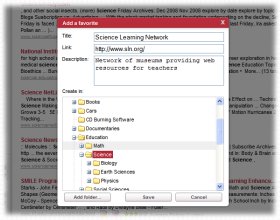|
Education
Web
Viewing 1-3 of 3 total results
bibliographic references) • electronic texts (e.g., database keyword searches, search engines, e-mail addresses) (ELA-5-H1) 37. Locate, analyze, and synthesize information from a variety of grade-appropriate resources, including: • multiple printed texts (e.g., encyclopedias,...
1
0
bibliographic references) • electronic texts (e.g., database keyword searches, search engines, e-mail addresses) (ELA-5-H1) 37. Locate, analyze, and synthesize information from a variety of grade-appropriate resources, including: • multiple printed texts (e.g., encyclopedias, atlases, library catalogs, specialized dictionaries, almanacs, technical encyclopedias, and periodicals) • electronic sources (e.g., Web sites, databases) • other media sources (e.g., community and government data, television and radio
38
0
http://www.doe.state.la.us/lde/uploads/3906.pdf#page=38
www.doe.state.la.us/lde/uploads/3906.pdf#page=38
bibliographic references) • electronic texts (e.g., database keyword searches, <span class="highlight">search</span> <span class="highlight">engines</span>, e-mail addresses) (ELA-5-H1) 37. Locate, analyze, and synthesize information from a variety of grade-appropriate resources, including: • multiple printed texts (e.g., encyclopedias, atlases, library catalogs, specialized dictionaries, almanacs, technical encyclopedias, and periodicals) • electronic sources (e.g., Web sites, databases) • other media sources (e.g., community and government data, television and radio
43
0
http://www.doe.state.la.us/lde/uploads/3906.pdf#page=43
www.doe.state.la.us/lde/uploads/3906.pdf#page=43
English Language Arts (ELA) Grade-Level Expectations 43 • print texts such as prefaces, appendices, annotations, citations, bibliographic references, and endnotes • electronic texts such as database keyword searches, <span class="highlight">search</span> <span class="highlight">engines</span>, and e- mail addresses (ELA-5-H1) 40. Locate, analyze, and synthesize information from grade-appropriate resources, including: • multiple printed texts (e.g., encyclopedias, atlases, library catalogs, specialized dictionaries, almanacs, technical encyclopedias, and
48
0
http://www.doe.state.la.us/lde/uploads/3906.pdf#page=48
www.doe.state.la.us/lde/uploads/3906.pdf#page=48
(e.g., prefaces, appendices, annotations, citations, bibliographic references) • electronic texts (e.g., database keyword searches, <span class="highlight">search</span> <span class="highlight">engines</span>, e-mail addresses) (ELA-5-H1) 35. Locate, analyze, and synthesize information from a variety of complex resources, including: • multiple print texts (e.g., encyclopedias, atlases, library catalogs, specialized dictionaries, almanacs, technical encyclopedias, and periodicals) • electronic sources (e.g., Web sites or databases) • other media (e.g., community
ALASKA CONTENT STANDARDS 35 A student who meets the content standard should: 1) recognize that libraries use classification systems to organize, store, and provide access to information and resources; 2) understand how library classification and subject heading systems work; 3) understand how inform...
1
0
ALASKA CONTENT STANDARDS 35 A student who meets the content standard should: 1) recognize that libraries use classification systems to organize, store, and provide access to information and resources; 2) understand how library classification and subject heading systems work; 3) understand how information in print, non-print, and electronic formats is organized and accessed; 4) search for information and resources by author, title, subject, or keyword, as appropriate; and 5) identify and use search
36
0
http://www.eed.state.ak.us/standards/pdf/standards.pdf#page=36
www.eed.state.ak.us/standards/pdf/standards.pdf#page=36
ALASKA CONTENT STANDARDS 35 A student who meets the content standard should: 1) recognize that libraries use classification systems to organize, store, and provide access to information and resources; 2) understand how library classification and subject heading systems work; 3) understand how information in print, non-print, and electronic formats is organized and accessed; 4) <span class="highlight">search</span> for information and resources by author, title, subject, or keyword, as appropriate; and 5) identify and use <span class="highlight">search</span>
presenting research, including using an expanded range of print and nonprint sources, following established criteria for evaluating information, locating specific information using indexes, tables of contents, and electronic search keywords, and providing documentation in a consistent format....
1
0
presenting research, including using an expanded range of print and nonprint sources, following established criteria for evaluating information, locating specific information using indexes, tables of contents, and electronic search keywords, and providing documentation in a consistent format. Massachusetts History and Social Science Curriculum Framework August 2003 119
125
0
http://www.doe.mass.edu/frameworks/hss/final.pdf#page=125
www.doe.mass.edu/frameworks/hss/final.pdf#page=125
presenting research, including using an expanded range of print and nonprint sources, following established criteria for evaluating information, locating specific information using indexes, tables of contents, and electronic <span class="highlight">search</span> keywords, and providing documentation in a consistent format. Massachusetts History and Social Science Curriculum Framework August 2003 119
|
